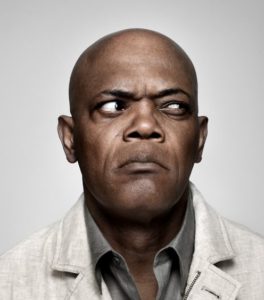Which therapy do I need?
 With the ever expanding number of health therapies out there, how on earth do you know which is the best for your complaint?
With the ever expanding number of health therapies out there, how on earth do you know which is the best for your complaint?
The massive question.
How do I know if I need a Physio or a Chiro or a Myo or a Podiatrist or Acupuncture or … or should I get a scan??
As a busy therapist I get this question all the time. So let’s pause. Let me rest your brain and give you three big tips that will help you figure this out.
“You gotta see MY guy, everyone’s always got the best guy!” Jerry Seinfeld.
Tip number 1: Find someone you trust!
 Look. The reality is, a good therapist actually wants you to get better.
Look. The reality is, a good therapist actually wants you to get better.
When this is the case, they will use their brain, they will try different things until they get results. And if they are not getting results they will refer you for further investigation or to a therapy better suited to your condition.
Rule number one is to find a quality human being that is interested in helping you get well. Whether Osteopath, Physiotherapist, Myotherapist or other. What they are called is less important than their genuine intent to get you well. Usually this person is found by word of mouth because good intentions can’t be hidden.
A good therapist should be getting good results within 3 to 6 sessions. If not, ask some questions.
Here is a well kept secret.

A skilled therapist will be able to use their specific craft to solve most complaints. For example, a Myotherapist may treat your back pain by manipulating muscles and tendons in your legs and back and that manipulation will stimulate a healing response that resolves the pain.
On the other hand an Osteopath may manipulate the joints in your back and hips to address exactly the same pain. Their manipulation will stimulate a healing response in the body that also resolves the pain. On the other hand a Physio may give you corrective exercises that alleviate the same pain. You get the picture.
70% of conditions can be solved with various techniques. If you are seeing a trustworthy therapist, they will know if your complaint falls in that category. And if not, suggest a more appropriate treatment.
Tip number 2: 70% of conditions can be solved in more than one way!
We can get stressed about whether we are wasting our hard earned on the wrong person. But following rule number one, if we are seeing someone we trust (or someone our best friend trusts) then there is a good chance that their technique is going to get results.
Tip number 3: What about the other 30%?
In order to be more specific we need to talk about different types of pain.
That is, acute pain and chronic pain.
Acute pain is when you break, tear, pop or sprain something. It is usually enough to stop you in your tracks and often results in visible bruising or swelling. Chronic pain is that constant, reoccurring, perhaps more invisible pain like headache, back ache or arthritic pain.
In my opinion the most highly qualified therapists to treat acute injuries are Physiotherapists. This is a generalisation but if you have to rehabilitate a tear, break or are recovering post surgery then physiotherapy is for you.
If you are suffering from chronic pain like headaches or reoccurring back pain, think Myotherapy or Osteopathy. Although Myotherapy manipulates muscle and Osteopathy manipulates bones, both these therapies are great at getting to the bottom of those long term reoccurring pains, just in different ways.
If that niggling back pain still persists, your trusted Physio, Osteo or Myo may in some cases refer you to a Podiatrist to assess your gait and prescribe footwear to help you on your road to recovery.
Finally once you are fit and ready to rock, be sure to introduce your exercise with a quality personal trainer who is willing to engage with your therapist and ensure long-lasting results.


